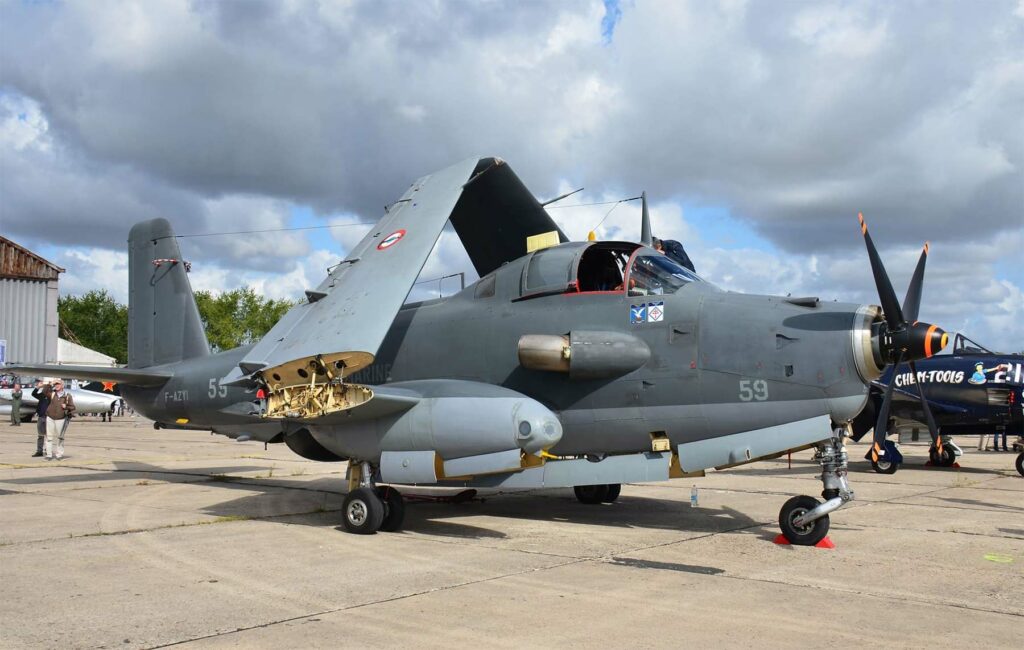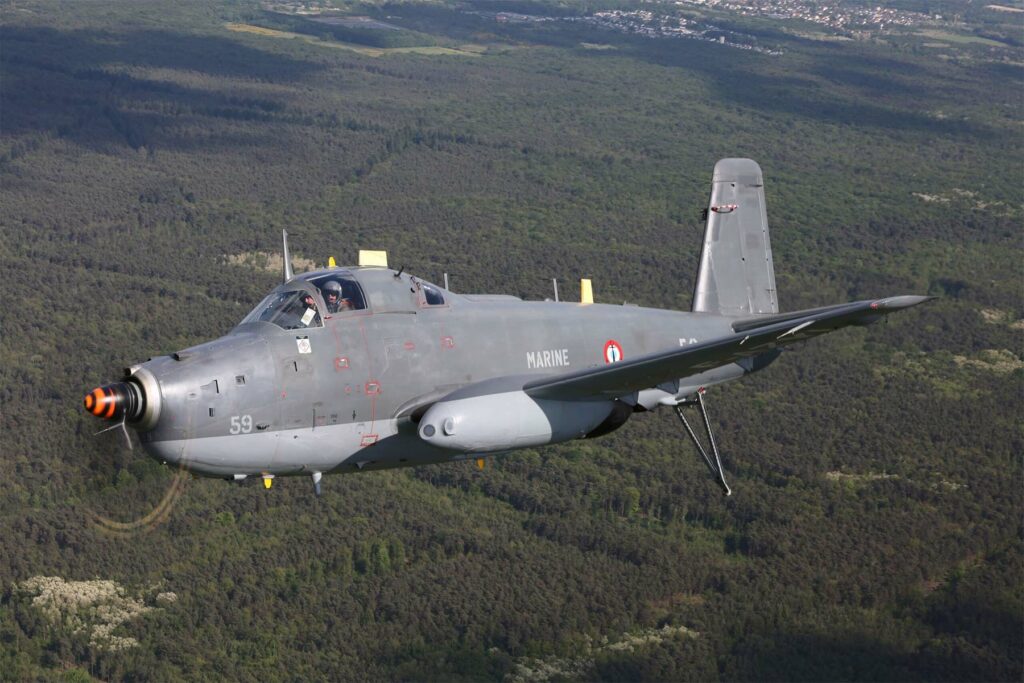The Breguet Br.1050 Alizé, “Tradewind,” is a carrier-based ASW aircraft, known for its anti-submarine warfare capabilities.
In brief
The Breguet Br.1050 Alizé, or “Tradewind,” is a French naval aviation aircraft designed in the 1950s for anti-submarine warfare (ASW). It is a monoplane with a high-wing configuration, powered by a single Rolls-Royce Dart turboprop engine. The Alizé features a crew of three, a retractable tricycle landing gear, and is equipped with advanced radar and sonobuoys for submarine detection. It has a maximum speed of 280 knots, a range of 1,000 nautical miles, and can carry torpedoes, depth charges, and missiles. The aircraft served primarily with the French Navy and the Indian Navy, proving effective in the ASW role through several decades of service.

History of the Development of the Breguet Br.1050 Alizé (Tradewind)
In the early Cold War period, recognizing the growing threat of submarines to naval operations and maritime security, the French Navy sought a dedicated anti-submarine warfare aircraft to operate from its aircraft carriers. The Breguet Aviation company responded to this need with the Br.1050 Alizé, developed to replace older piston-engined aircraft with a modern, turboprop-powered solution.
The development of the Alizé was initiated in the early 1950s, with the prototype first taking to the skies on 6 October 1956. The project was driven by the necessity for a versatile, carrier-capable aircraft that could excel in the detection and engagement of submarines, incorporating the latest advancements in radar and sonar technology for this purpose. The Alizé was designed to fulfill a critical role in naval air operations, providing a strategic advantage in anti-submarine warfare.
Design of the Breguet Br.1050 Alizé (Tradewind)
The design of the Breguet Br.1050 Alizé emphasized functionality, endurance, and versatility. Its high-wing monoplane layout facilitated stable, low-speed flight characteristics, essential for ASW operations. The aircraft was 15.6 meters long, with a wingspan of 15.5 meters, and powered by a Rolls-Royce Dart RDa.21 turboprop engine, generating 2,100 horsepower. This engine choice offered a balance between speed, range, and fuel efficiency, crucial for extended patrols over the ocean.
The Alizé’s avionics suite was state-of-the-art, featuring maritime surveillance radar, magnetic anomaly detectors (MAD), and equipment for deploying and monitoring sonobuoys. Its weapons bay and underwing hardpoints allowed it to carry a mix of torpedoes, depth charges, and anti-ship missiles, making it a formidable adversary against submarines.
Performance of the Breguet Br.1050 Alizé (Tradewind)
The Alizé’s performance was tailored to the demands of anti-submarine warfare, offering an optimal mix of endurance, speed, and versatility. It could reach a maximum speed of 280 knots, with a service ceiling of 25,000 feet and a range of up to 1,000 nautical miles. These characteristics enabled the Alizé to cover vast areas of ocean in search of enemy submarines, responding quickly to threats and coordinating with surface ships and other assets.
Compared to contemporaries such as the American S-2 Tracker, the Alizé was comparable in its ASW role, each with unique strengths. The Alizé’s turboprop engine provided a speed advantage over some of its piston-engined counterparts, while its advanced avionics suite ensured high effectiveness in submarine detection and engagement.
Variants of the Breguet Br.1050 Alizé (Tradewind)
The Alizé was produced mainly in a single variant for its ASW role. However, several upgrades and modifications were made throughout its service life to enhance its capabilities, including avionics updates, engine improvements, and the integration of new weapons systems. These incremental improvements ensured the Alizé remained effective in its role against evolving submarine threats.

Military Use and Combat of the Breguet Br.1050 Alizé (Tradewind)
The Breguet Br.1050 Alizé saw extensive service with the French Navy, participating in numerous naval operations and exercises throughout its career. Its primary mission was anti-submarine warfare, patrolling maritime borders and protecting naval task forces from submarine threats. The Alizé also served with the Indian Navy, where it contributed to India’s maritime reconnaissance and ASW capabilities.
Although the Alizé was not designed for direct combat engagements, its role in detecting and neutralizing submarines was crucial for naval operations. Its effectiveness in these missions underscored the importance of dedicated ASW aircraft in maintaining control of the seas.
The Breguet Br.1050 Alizé “Tradewind” represents an important chapter in naval aviation history, embodying the transition to modern ASW tactics and technology during the Cold War. Its design, performance, and operational history highlight the critical role of carrier-based aircraft in anti-submarine warfare, contributing significantly to maritime security. Despite being phased out in favor of more modern aircraft, the legacy of the Alizé endures, marking a pivotal period in the evolution of naval air power.
Back to the Special Aircraft section